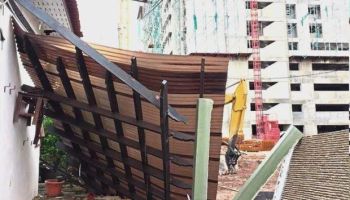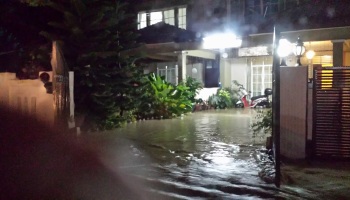KUALA LUMPUR: Datuk Seri Dr Ahmad Zahid Hamidi has claimed trial to 45 charges of money-laundering involving RM72mil and criminal breach of trust and accepting bribes involving RM42mil.
This is the first time a serving Umno president has been hauled to court to face criminal charges.
For charges one to 10, Dr Ahmad Zahid, who was trustee of Yayasan Akalbudi, was accused of committing CBT involving RM20,833,132.99 belonging to the foundation.
The former deputy prime minister and home minister allegedly committed the offences at Affin Bank Bhd at Jalan Bunus here between Jan 13, 2014 and Jan 11, 2016.
The charges under Section 409 of the Penal Code provides for imprisonment between two and 20 years, whipping and fine, upon conviction.
For charges 11 to 18, Dr Ahmad Zahid was accused of receiving RM21,250,000 in gratification in his capacity as home minister.
The bribes were allegedly from Syarikat Mastoro Kenny IT Consultant & Services as an inducement for the accused to assist the company obtain MyEG projects which is under the purview of the Home Ministry; Syarikat Data Sonic Group Bhd director Chew Ben Ben, with the company appointed to insert passport chips for five years or 12.5 million chips in Malaysian passports; and from Syarikat Profound Radiance Sdn Bhd director Azlan Shah Jaffril, with the company appointed as service provider of a one-stop visa centre for Pakistan and Nepal.
The offences were allegedly committed at Malayan Banking Bhd in Bangsar between Dec 7, 2016 and March 15 this year.
The charges under Section 16(a)(B) of the Malaysian Anti-Corruption Commission (MACC) Act 2009 carry a jail term of up to 20 years and fine of not less than five times the sum of gratification or RM10,000, whichever is higher, upon conviction.
For the remaining 27 charges, Dr Ahmad Zahid was accused of money laundering involving RM72mil, said to be proceeds from unlawful activities by way of:
> Giving directions to deposit between RM600,000 and RM9.35mil into two bank accounts;
> Giving instructions to purchase two bungalow lots worth RM5.9mil in Kajang; and
> Instructing one Omar Ali Abdullah to convert RM6.8mil into 30 pieces of cheques for the purpose of purchasing fixed deposits in Maybank.
The offences were allegedly committed at Maybank in Bangsar and Marhaba Enterprise Sdn Bhd in Jalan Bukit Bintang between March 29, 2016 and April 11, 2018.
The charges under Section 4(1)(a) of the Anti-Money Laundering, Anti-Terrorism Financing and Proceeds of Unlawful Activities Act 2001 carry a jail term of up to 15 years and fine of not less than five times the sum involved or RM5mil, whichever is higher, upon conviction.
Dr Ahmad Zahid, 65, who wore an orange batik shirt, appeared calm as the charges were being read out for about an hour.
At one point, he even turned around and smiled at the public gallery.
Counsel Hisyam Teh Poh Teik stood by him outside the dock as the court interpreter read the charges.
Datuk Seri Gopal Sri Ram, who was appointed to lead the prosecution by the Attorney General’s Chambers (AGC), suggested that bail be set at RM2mil.
Hisyam asked that bail be paid in two instalments, to which Sri Ram argued: “The rule is that the accused must post bail on the same day, otherwise he may have been kept in custody. There must be no exception.”
Hisyam said there were judicial precedence in the cases involving Datuk Seri Najib Tun Razak and Datin Seri Rosmah Mansor where the same court allowed bail to be posted in instalments, and added that there was no risk of his client escaping.
Sessions Court judge Azura Alwi allowed bail at RM2mil in one surety, to be paid in two instalments.
“There is no question of this court according special treatment to anyone,” she remarked, ordering RM1mil to be posted yesterday and the balance to be settled by or on Oct 26.
A family friend of the accused posted the first bail instalment. Mention was fixed for Dec 14
- The Star by Nurbaiti Hamdan
Related stories:
Many line road leading to court complex
Names of several companies pop up in charge sheet
Detailed: Zahid Hamidi’s CBT and corruption charges
Zahid Slapped With 45 Charges, May Face 405 Years in Jail for Just ...
Related post:

















